Guitar Licks For Harmonica – You Don’t Love Me
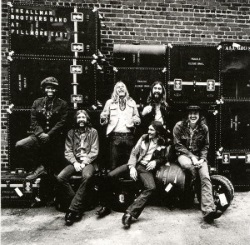 You don’t love me, pretty baby
You don’t love me, pretty baby
The Good Doctor, Greasy Rob from the garage and Barry the Landlord were enjoying some time out on the patio, shelling a mountain of fresh prawns and sipping ice-cold pilsner. Amidst occasional quacks from the village duck pond and the chirrup of sparrows in the privet hedge, they could detect the approaching whistle of Otis the postman, who was steadily making his rounds.
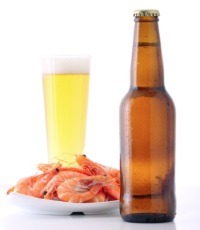 ‘How do all!‘ Otis leaned over the Surgery gate, tugging the peak of his hat and holding out a letter for the Doc. ‘Thanks Otis old boy, have you time for some of our splendid seafood?’ the Doc enquired. ‘Sorry’, Otis replied, ‘I’m in a bit of a rush right now – an Otis rush you could say’. Otis was visibly pleased with his impromptu blues pun.
‘How do all!‘ Otis leaned over the Surgery gate, tugging the peak of his hat and holding out a letter for the Doc. ‘Thanks Otis old boy, have you time for some of our splendid seafood?’ the Doc enquired. ‘Sorry’, Otis replied, ‘I’m in a bit of a rush right now – an Otis rush you could say’. Otis was visibly pleased with his impromptu blues pun.
‘Aaah!‘ said the Doc, ‘You Don’t Love Me!‘ Otis looked a little surprised. ‘I wouldn’t go that far‘, he replied, straightening his cap. ‘No, no, no…the letter old boy! It’s from Tom Esposito. He wants to know how to play the riff for You Don’t Love Me by The Allman Brothers’. ‘Now we’re talking!‘ whooped Otis, as he pulled a Special 20 from his pocket, ‘I likes a drop of the AB’s.’
You don’t love me, yes I know
This track has been covered and played by countless blues and rock artists over the years and, for some reason, it always seems to include a harmonica. Perhaps because its original 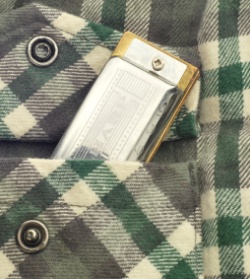 recording was made by a blues harp player, perhaps because Billy Boy Arnold and Junior Wells were instrumental in its development, perhaps because the most well known proponents of the track, The Allman Brothers, added harp to their live recordings and shows.
recording was made by a blues harp player, perhaps because Billy Boy Arnold and Junior Wells were instrumental in its development, perhaps because the most well known proponents of the track, The Allman Brothers, added harp to their live recordings and shows.
Yet a seasoned harp player will tell you you’re on a rodeo ride to nowhere with this riff, despite its apparent simplicity. The minor tuning, the octave drop and a chromatic sting in the tail all require faithful pitch delivery, disciplined phrasing and accurate direct bending. But even then, like a bad nightmare, you risk rolling off the end of the harp and landing flat on your face. Our mission in this post is to save your embarrassment by mapping out the notes of the riff and then identifying some solutions that will help you to overcome the short harp’s limitations. But just before we start, it’s time for a spot more background.
Well if you leave me pretty baby
The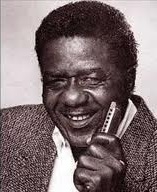 original version of You Don’t Love Me is credited to Willie Cobbs, a Chicago blues harp player who recorded it in 1960. He claimed he learned his chops from Little Walter, yet curiously his recording has no place for any harp, only a saxophone. Cobb said the song’s inspiration had come from a farm hand in his native Arkansas. Common opinion suggests however, that Cobb (or perhaps the Arkansas yeoman) actually based his song on the Billy Boy Arnold and Bo Diddley cut, She’s Fine, She’s Mine, a number that pre-dated his by five years. For reference, She’s Fine, She’s Mine featured some basic harping by Billy Boy Arnold and was released as the B side to Diddley Daddy, another Arnold composition.
original version of You Don’t Love Me is credited to Willie Cobbs, a Chicago blues harp player who recorded it in 1960. He claimed he learned his chops from Little Walter, yet curiously his recording has no place for any harp, only a saxophone. Cobb said the song’s inspiration had come from a farm hand in his native Arkansas. Common opinion suggests however, that Cobb (or perhaps the Arkansas yeoman) actually based his song on the Billy Boy Arnold and Bo Diddley cut, She’s Fine, She’s Mine, a number that pre-dated his by five years. For reference, She’s Fine, She’s Mine featured some basic harping by Billy Boy Arnold and was released as the B side to Diddley Daddy, another Arnold composition.
Recording copyright reasons meant that Cobb’s song only became a regional hit, mainly around the Memphis area. It took some cover versions by other recording artists – most notably Junior Wells and Buddy Guy – for the song to gain national attention. It subsequently broke worldwide, courtesy of the Allman Brothers, in the early 1970’s.
Don’t you know you’re gonna hurt me so?
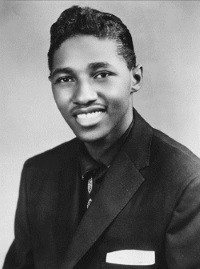 In his 1955 recording She’s Fine, She’s Mine, Bo Diddley initiated the riff with his trade mark reverb guitar. Billy Boy Arnold joins him in 2nd position on a D harp, but drops out under cover of Bo’s guitar just before each phrase is completed. The question is why? It could be for effect, but with closer analysis it is more likely the product of an underlying problem with the 10 diatonic harp; the sting in the tail mentioned earlier. Check out the clip below and you’ll see what we mean. Billy Boy’s basically run out of harp!
In his 1955 recording She’s Fine, She’s Mine, Bo Diddley initiated the riff with his trade mark reverb guitar. Billy Boy Arnold joins him in 2nd position on a D harp, but drops out under cover of Bo’s guitar just before each phrase is completed. The question is why? It could be for effect, but with closer analysis it is more likely the product of an underlying problem with the 10 diatonic harp; the sting in the tail mentioned earlier. Check out the clip below and you’ll see what we mean. Billy Boy’s basically run out of harp!
Well I’m gonna tell my mother
In 1962, an instrumental called Shimmy, Shimmy Walk Pt.1 became a minor hit. It was recorded in Louisiana by a group called The Megatons (alias Rockabilly guitar hero Billy Lee Riley and The Little Green Men). In the UK it went on to become a Mod favourite of the same magnitude as Green Onions. Back in the US, it was also the cause of a protracted copyright law suit by Willie Cobbs’ record label, as The Megatons had evidently lifted their riff from You Don’t Love Me, despite the added 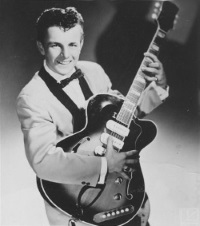 swing. A swing which, with its full-on brass and Hammond backing, crystallises the riff and may well have provided a rhythmic beacon for Junior Wells and The Allman Brothers.
swing. A swing which, with its full-on brass and Hammond backing, crystallises the riff and may well have provided a rhythmic beacon for Junior Wells and The Allman Brothers.
For our purposes, it’s worth noting that The Megatons included some extremely naïve acoustic harp work in their recording. It’s poor enough to leave us wondering why they even bothered. The harp player uses a C harp in 2nd position avoiding all reference to the main riff, broadsiding the tune’s minor melody line with major licks instead, and missing 3D’ every time. To complete the mess, he resolves his phrasing on a painfully out-of-tune draw reed in hole 2. The harp may have been added in recognition of the song’s R’n’B roots, or simply because the harp sound itself was considered trendy. Either way it’s a howling piece of musical graffiti.
I’m gonna talk to my father too
Whether or not The Megatons’ hit had any bearing on matters, the Bo Diddley/Willie Cobbs groove changed quite dramatically when Junior Wells 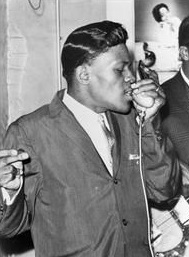 and Buddy Guy covered the song on their 1965 Hoodoo Man Blues album. Their rocking approach added vitality to the riff and it’s probably the last link in our chain before to the Allmans’ take over.
and Buddy Guy covered the song on their 1965 Hoodoo Man Blues album. Their rocking approach added vitality to the riff and it’s probably the last link in our chain before to the Allmans’ take over.
Yet even with Junior Wells at the helm, the harp line is sketchy. He opens up quietly at the start of the recording, also in 2nd position on a D harp, but just like Billy Boy Arnold, he backs out before the riff is completed. It seems he hits the same problem. At the end of the recording there is another sprinkling of harp, but once again Wells obviates the riff, before camouflaging matters with an attempted show boat outro.
Well I’m gonna tell everybody
The Allman Brothers recorded their version in 1971 for the Live At Fillmore East album.
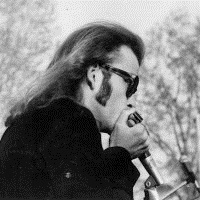 The harp contribution from Thom Doucette emerges midway through the song, and once again it’s delivery is crude. It’s played on a D Harp and it’s another example of major 2nd position licks being slapped over a minor song structure.
The harp contribution from Thom Doucette emerges midway through the song, and once again it’s delivery is crude. It’s played on a D Harp and it’s another example of major 2nd position licks being slapped over a minor song structure.
And once again the end of the riff is missed in order to avoid the fiendish note structure. On this occasion the harp opts for a frenzied walkabout in the middle register and, as it does so, somewhat loses the plot. A more contemporary 2012 YouTube clip of the AB band has a later incumbent on the harp also struggling to find the appropriate fit; in desperation he even changes harps mid-flow. Here’s a clip of Thom Doucette’s walkabout.
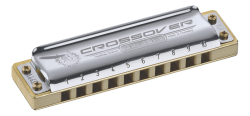 What those young girls will do for you
What those young girls will do for you
Well, now that we’ve gathered enough evidence to trigger the biggest storm warning in the history of harp playing, let’s close in on the forensics, starting with the Allman Brothers’ version. It’s played in Am and the notes to the riff are:
E G A (A) G A (A) G A C
E G A G E Eb D C A
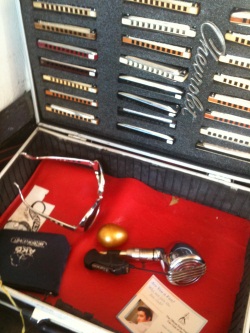 The notes in parenthesis are implicit, but not actually played. They are used by other bands however, so we’ll keep them in view. Opening our harp case, with the song being in Am, our immediate options would be to select a D harp for 2nd position, paying close attention to the flattened third in 3D’, or else a G harp in 3rd position. If neither of these works, we can explore other positions and other harps. Starting with 2nd position for now, and using the familiar lower octave, our tab is:
The notes in parenthesis are implicit, but not actually played. They are used by other bands however, so we’ll keep them in view. Opening our harp case, with the song being in Am, our immediate options would be to select a D harp for 2nd position, paying close attention to the flattened third in 3D’, or else a G harp in 3rd position. If neither of these works, we can explore other positions and other harps. Starting with 2nd position for now, and using the familiar lower octave, our tab is:
1D 2D” 2D (2D) 2D” 2D (2D) 2D” 2D 3D’
1D 2D” 2D 2D” 1D 1D’ 1B ? ?
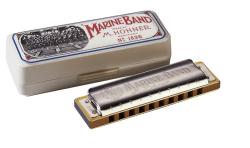 The first line is achievable, although 3D’ is a tricky bend to pitch accurately. Our problem comes at the end of the second line where the last two notes fall off the end of the harp. The riff’s ending simply cannot be replicated note for note. Which explains how and why Billy Boy Arnold and Junior Wells both hit the same wall. To find a workable solution, we can switch the whole project up to the middle octave in 2nd position. In doing so, our problem with the final descent is solved, however the first line ends on an overblow in hole 6, which is not an option for many players. Playing a Low D harp will merely bring us up against exactly the same overblow issue. The tab looks like this:
The first line is achievable, although 3D’ is a tricky bend to pitch accurately. Our problem comes at the end of the second line where the last two notes fall off the end of the harp. The riff’s ending simply cannot be replicated note for note. Which explains how and why Billy Boy Arnold and Junior Wells both hit the same wall. To find a workable solution, we can switch the whole project up to the middle octave in 2nd position. In doing so, our problem with the final descent is solved, however the first line ends on an overblow in hole 6, which is not an option for many players. Playing a Low D harp will merely bring us up against exactly the same overblow issue. The tab looks like this:
4D 5D 6B (6B) 5D 6B (6B) 5D 6B 6B#
4D 5D 6B 5D 4D 4D’ 4B 3D’ 2D
Well if I hide pretty baby
So we begin to explore 3rd position on a G harp. This option fits, however it is  uncomfortable. The 4D 4B 4D switch is clunky and there’s a temptation to substitute the 4B with 4D’ when you play. The second line also requires excellent deep bend control on 3D” and 3D”’, and 2D” is unwieldy on such a low harp. However, if you have bins like steam pistons and chops like a hammerhead, it’s an option. Here’s the tab:
uncomfortable. The 4D 4B 4D switch is clunky and there’s a temptation to substitute the 4B with 4D’ when you play. The second line also requires excellent deep bend control on 3D” and 3D”’, and 2D” is unwieldy on such a low harp. However, if you have bins like steam pistons and chops like a hammerhead, it’s an option. Here’s the tab:
3D” 4B 4D (4D) 4B 4D (4D) 4B 4D 5D
3D” 4B 4D 4B 3D” 3D”’ 3B 2D” 1D
Using the same harp, most mortals would migrate up to the middle register in 3rd 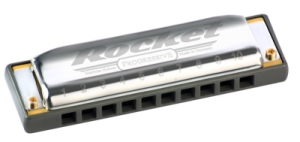 position. This is a less heavyweight solution and, technically speaking, it works really well. Although the initial 8D 7B 8D switch is also a bit clunky, it’s lovely to dig into that 6D’ on the way down, and we’re certainly free of all the nasty deep bends hidden in the lower register. But stepping back for a moment, ask yourself an important question. Does it sound bluesy enough? We’re a whole octave higher and this may work against the pitch and groove of the song. Thinking smart now, theoretically the same register on a Low G short harp would provide a solution. In reality though, they just aren’t available.
position. This is a less heavyweight solution and, technically speaking, it works really well. Although the initial 8D 7B 8D switch is also a bit clunky, it’s lovely to dig into that 6D’ on the way down, and we’re certainly free of all the nasty deep bends hidden in the lower register. But stepping back for a moment, ask yourself an important question. Does it sound bluesy enough? We’re a whole octave higher and this may work against the pitch and groove of the song. Thinking smart now, theoretically the same register on a Low G short harp would provide a solution. In reality though, they just aren’t available.
6D 7B 8D (8D) 7B 8D (8D) 7B 8D 9D
6D 7B 8D 7B 6D 6D’ 6B 5D 4D
If I don’t see you no more
Of course we could use a G Chromatic harp in 3rd position, but we’d need to ask ourselves 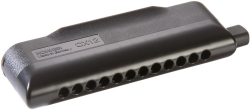 that same question again. Will it sound bluesy enough? In my opinion the answer is no. Which is a shame because the riff flows rather well after a few practise runs. For a jazzy, big band take, this might be a nice alternative. Using 5B rather than 4B keeps everything simple, but we do have to control the shuttered note 3B# on the descent. Here’s the tab on a three octave, 48 note, C major chromatic:
that same question again. Will it sound bluesy enough? In my opinion the answer is no. Which is a shame because the riff flows rather well after a few practise runs. For a jazzy, big band take, this might be a nice alternative. Using 5B rather than 4B keeps everything simple, but we do have to control the shuttered note 3B# on the descent. Here’s the tab on a three octave, 48 note, C major chromatic:
3D 5B 5D (5D) 5B 5D (5D) 5B 5D 6D
3D 5B 5D 5B 3D 3B# 3B 2D 1D
Well if you think I’ll be your fool, Lord
Well that’s our search through a typical harp collection completed. Thinking outside the box now, perhaps we can source ideas from other areas. A random trawl of YouTube brought up this clip of Lester Butler (The Red Devils) and G.Love playing our song. Lester is on the bullet mic, G.Love is on the rack harp. It was recorded in 1998 and the song is played in Em.
At the outset, Lester blows 2nd position on an A harp, but struggles with the riff. He opens with a major 1B 2B 2D run up, instead of a minor bluesy 1B 2D” 2D and instantly hits the Billy Boy Arnold/Junior Wells problem. G.Love cuts in on his rack harp however, and guides Lester up to where the riff sits more comfortably, blowing 3D’ 4B 3D’ 2D to round things off. It is redolent of the riff in Canned Heat’s On The Road Again. It overcomes our missing note issue, it avoids the chromatic descent and it sounds minor bluesy. And all G.Love is doing, in effect, is moving the second part of the lick up into the middle register. Which avoids falling off the end of the harp. A neat move.
2D” 1D 2D” 2D 2D” 2D 2D” 2D 3D’
2D” 1D 2D” 2D 2D” 1D 3D’ 4B 3D 2D
You better be on your merry way
There’s also a version of our You Don’t Love Me on YouTube featuring Gary Moore in Montreux in 1995, with yet another harp player, the mighty Frank Mead. Frank is a sax and harp maestro, and he recorded the harp line on Gary Moore’s version of Jimmy Rogers’ Too Tired. Formerly of the Big Town Play Boys, Frank is currently with The Jools Holland Big Band. If anyone can find the optimum fit for our riff, he’s the man. In this clip Frank carves out the strongest path on a D harp, remaining faithful to the original notation. In doing so, he’s worked out a solution that it at once bluesy and musically correct. He even finds a couple of grace notes in the process.
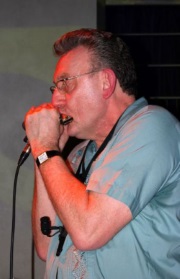 In principle, Frank has used the same approach as G.Love, by finishing on a sequence of notes in the middle register. Coincidentally, these are the same notes as the second line of our earlier example in 2nd position – the one with the awkward overblow. Frank also builds a confident solo by sticking faithfully to the second position blues scale and nailing any minor note requirements along the way. There’s no random walkabout here. I will say however that, on initial hearing, the pitch of the regular D harp is slightly harsh on the ear. But this may be down to the sound engineer at the show. Again, in theory a Low D harp would be an alternative option, however you’d find is much less manoeuvrable across the opening line and you would most likely be lost in the overall mix. Here’s the tab for Frank’s version:
In principle, Frank has used the same approach as G.Love, by finishing on a sequence of notes in the middle register. Coincidentally, these are the same notes as the second line of our earlier example in 2nd position – the one with the awkward overblow. Frank also builds a confident solo by sticking faithfully to the second position blues scale and nailing any minor note requirements along the way. There’s no random walkabout here. I will say however that, on initial hearing, the pitch of the regular D harp is slightly harsh on the ear. But this may be down to the sound engineer at the show. Again, in theory a Low D harp would be an alternative option, however you’d find is much less manoeuvrable across the opening line and you would most likely be lost in the overall mix. Here’s the tab for Frank’s version:
1D 2D” 1D 2D 2D 2D” 2D 2D 2D” 2D 3D’
4D 5D 4D 6B 5D 4D 4D’ 4B 3D’ 2D
No, no, no, you don’t love me, that I know
Which brings us neatly full circle apart, that is, from our own sting in the tail courtesy of Steve Baker, consultant to Hohner harmonicas. A logical solution to our riff problem would be to custom build a harp for the job. A harp that had our two missing overspill notes purposely built in – the ones Billy Boy Arnold and Junior Wells couldn’t find.
Well, the good news is it’s already been done. I’m talking, of course, about the 14 hole 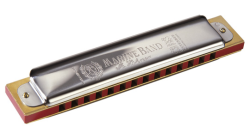 Hohner SBS (Steve Baker Special). An SBS extends the 10 hole diatonic harp’s main tonal range downwards by repeating holes 1 to 3 a whole octave lower (except for the keys of G and A where the note ranges extends upwards). This conveniently includes our two missing notes and the bend we need to achieve them. Completing the first tab above (the one with two red question marks) and renumbering things to suit the long harp, here’s the SBS version:
Hohner SBS (Steve Baker Special). An SBS extends the 10 hole diatonic harp’s main tonal range downwards by repeating holes 1 to 3 a whole octave lower (except for the keys of G and A where the note ranges extends upwards). This conveniently includes our two missing notes and the bend we need to achieve them. Completing the first tab above (the one with two red question marks) and renumbering things to suit the long harp, here’s the SBS version:
4D 5D” 4D 5D 5D 5D” 5D 5D 5D” 5D 6D’
4D 5D” 4D 5D 5D” 4D 4D’ 4B 3D’ 2D
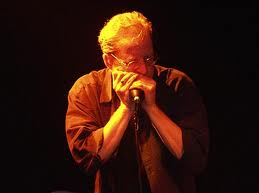 This option is completely faithful to the original flow and pitch of things, without the need to leap an octave higher as the riff closes. Using a long harp does takes practise though – it’s harder to work in tandem with a harp mic and the lower octave reeds respond much more slowly. You’d need to rehearse this option extensively and maybe even look at re-gapping the harp. You’d also lose the benefit of the springboard turnaround that Frank Mead and G.Love have when they repeat their riffs at tempo. But it’s a fun option that’s well worth exploring.
This option is completely faithful to the original flow and pitch of things, without the need to leap an octave higher as the riff closes. Using a long harp does takes practise though – it’s harder to work in tandem with a harp mic and the lower octave reeds respond much more slowly. You’d need to rehearse this option extensively and maybe even look at re-gapping the harp. You’d also lose the benefit of the springboard turnaround that Frank Mead and G.Love have when they repeat their riffs at tempo. But it’s a fun option that’s well worth exploring.
No, no, no, you don’t love me, that I know
When Otis finally tried the riff for himself, he wished he’d refrained from joining the prawn-peeling frenzy. ‘Blimey’, he growled, ‘my mits smell like they’ve been stuffed up an ‘addock’s arse!‘ ‘Otis baby,’ replied the Doc through his pilsner-head moustache, ‘with a harp in your hands, the world’s your lobster.’
Meanwhile, here’s Dawn Penn with a reggae derivative of the Willie Cobbs/Bo Diddley original. You might recognise it from your local dance hall.


Wot no Feelgood version?
Good call Tex! …featuring none other than the Surgery’s No.1 Dr.Feelgood pal, Mr Gordon Russell on guitar. I decided to skip this version because the only bit of harp floats in right at the end and it’s more of a Harp-FX contribution from the mighty Lee Brilleaux than any discernible attempt to play the head.
You like to write about the holes and bending ,and we like to read about it !
And Frank Meade really dig the song . Another excelent post
We could talk about playing this in midlle octave Low C harp 4 Th position ,but I leave that for February when we will be harping by the sea .
In the mean time SoD is a discovery to me !! ( another post ) and it´s all about the Groove ,No?
Like a note and is Vibratto
Thank you to the Good Doctor to share all this historys with us .
Low C harp 4th position
Key Amin
+8 +9 -10
+9 -10 +9 -10 +10 +8+9-10
+9+8+8′ -8+7-6
The 8 blowbend give us that flate 5 and make it blues !
The problema is The low octave for me The problem are The
Thank ‘s again Doc for The good thougts and harpthinkings:.
The problem: Overblows and overdraws !!!
Hi, have you tried a Dm marineband, 2draw start. Brilliant article, thanks.
Hi Huey – yes I looked into that, but it’s cheating ;o))
I imagine the main riff on a minor tuning would be..
2D 3D 4B
4B 3D 4B
4B 4D 4B 5B
2D 3D 4B
3D 2D 2D” 2B 1B
Clean and simple, but does it give you the same ‘blues’?
Ah it’s only kinda cheating 🙂 the minor marineband maintains a decent blusey feel I think, more so than the Lee oskars. Yep your tab is bang on. Actually an Am sounds deeper.
As long as it sounds good, it’s a good solution. Thanks for contributing and I’m glad you enjoyed the article. Doc
I just mapped this out really quick for a standard C harp.
8B 9B 10D
9B 10D
9B 10D 10B
8B 9B 10D
9B 8B 8B’
8D 10B 10D
The only bend required is on the 8 blow bend to achieve Eb. Bare with me though, I havent had a chance to play this per se, since I am posting from work, but, my mental image of the C harp displays this tab layout.
Thanks for your contribution Lord McGirk. The theory appears to be correct, but when I played it, my dog ran out the back door and I lost two tooth fillings. The pitch is too high for comfort I fear. Doc
Yes, and i had already propose this tab C harp 4th position preferably a LOW C harp two years ago.
good work Richard
I really love this article. Thom Doucette was an early influence, as I loved that he wasn’t a technical master, but played with a lot of heart. Your analysis is spot on, though.
I’d play it in 3rd position on G harp.
Thanks Sruli – he sure throws it all in! Which is fun.
Excellent Article!! It’s very informative. Thanks for sharing.